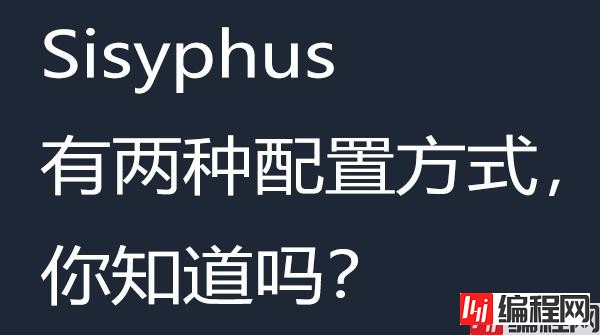Python 官方文档:入门教程 => 点击学习
目录1、函数式配置概览1.1 默认配置2、方法说明2.1 condition2.2 retryWaitContext2.3 maxAttempt2.4 listen2.5 recov

为了满足更加方便的配置,Retryer 类提供了许多可以配置的信息。
public void defaultConfigTest() {
Retryer.<String>newInstance()
.condition(RetryConditions.hasExceptionCause())
.retryWaitContext(RetryWaiter.<String>retryWait(NoRetryWait.class).context())
.maxAttempt(3)
.listen(RetryListens.noListen())
.recover(Recovers.noRecover())
.callable(new Callable<String>() {
@Override
public String call() throws Exception {
System.out.println("called...");
throw new RuntimeException();
}
}).retryCall();
}
和下面的代码是等价的:
public void helloTest() {
Retryer.<String>newInstance()
.callable(new Callable<String>() {
@Override
public String call() throws Exception {
System.out.println("called...");
throw new RuntimeException();
}
}).retryCall();
}
重试触发的条件,可以指定多个条件。
默认为抛出异常。
重试等待的策略,可以指定多个。
默认为不做任何等待。
指定最大重试次数,包括第一次执行。
默认值:3 次。
指定重试的监听实现,默认为不做监听。
当重试完成之后,依然满足重试条件,则可以指定恢复的策略。
默认不做恢复。
待重试执行的方法。
触发重试执行。
所有的接口,都可以直接查看对应的子类实例。
基于替换的灵活性,用户可以实现接口,定义更符合自己业务的实现。
配置具有很高的灵活性,但是对于开发人员的使用,就没有注解那样简单灵活。
所以本框架也实现了基于注解的重试。
保证接口和注解二者的统一性。
<dependency>
<groupId>${project.groupId}</groupId>
<artifactId>sisyphus-annotation</artifactId>
<version>${project.version}</version>
</dependency>
注解:
核心注解主要有两个。
用于指定重试的相关配置。
@Documented
@Inherited
@Target(ElementType.METHOD)
@Retention(RetentionPolicy.RUNTIME)
@RetryAble(DefaultRetryAbleHandler.class)
public @interface Retry {
Class<? extends com.GitHub.houbb.sisyphus.api.core.Retry> retry() default DefaultRetry.class;
int maxAttempt() default 3;
Class<? extends RetryCondition> condition() default ExceptionCauseRetryCondition.class;
Class<? extends RetryListen> listen() default NoRetryListen.class;
Class<? extends Recover> recover() default NoRecover.class;
RetryWait[] waits() default {};
}
用于指定重试的等待策略。
package com.github.houbb.sisyphus.annotation.annotation;
import com.github.houbb.sisyphus.annotation.annotation.metadata.RetryWaitAble;
import com.github.houbb.sisyphus.annotation.handler.impl.DefaultRetryWaitAbleHandler;
import com.github.houbb.sisyphus.core.constant.RetryWaitConst;
import com.github.houbb.sisyphus.core.support.wait.NoRetryWait;
import java.lang.annotation.*;
@Retention(RetentionPolicy.RUNTIME)
@Inherited
@Documented
@Target(ElementType.ANNOTATION_TYPE)
@RetryWaitAble(DefaultRetryWaitAbleHandler.class)
public @interface RetryWait {
long value() default RetryWaitConst.VALUE_MILLS;
long min() default RetryWaitConst.MIN_MILLS;
long max() default RetryWaitConst.MAX_MILLS;
double factor() default Double.MIN_VALUE;
Class<? extends com.github.houbb.sisyphus.api.support.wait.RetryWait> retryWait() default NoRetryWait.class;
}
定义好了注解,肯定要有注解的相关使用。
关于注解的使用,主要有两种方式。
基于代理模式和字节码增强。
如果是项目中没有使用 spring,直接使用这种方式比较方便。
可以和 spring 直接整合。
使用方式和 spring-retry 是一样的。
这些内容将放在下一节进行详细讲解。
小结:
灵活的配置才能更加符合实际生产使用中的各种需求。一般实际使用推荐使用注解的配置方式,非常的简单方便。
到此这篇关于Java 重试框架 Sisyphus 配置的两种方式的文章就介绍到这了,更多相关Java 重试框架 Sisyphus 配置方式内容请搜索编程网以前的文章或继续浏览下面的相关文章希望大家以后多多支持编程网!
--结束END--
本文标题: Java 重试框架 Sisyphus 配置的两种方式
本文链接: https://lsjlt.com/news/156933.html(转载时请注明来源链接)
有问题或投稿请发送至: 邮箱/279061341@qq.com QQ/279061341
2024-03-01
2024-03-01
2024-03-01
2024-02-29
2024-02-29
2024-02-29
2024-02-29
2024-02-29
2024-02-29
2024-02-29
回答
回答
回答
回答
回答
回答
回答
回答
回答
回答
0